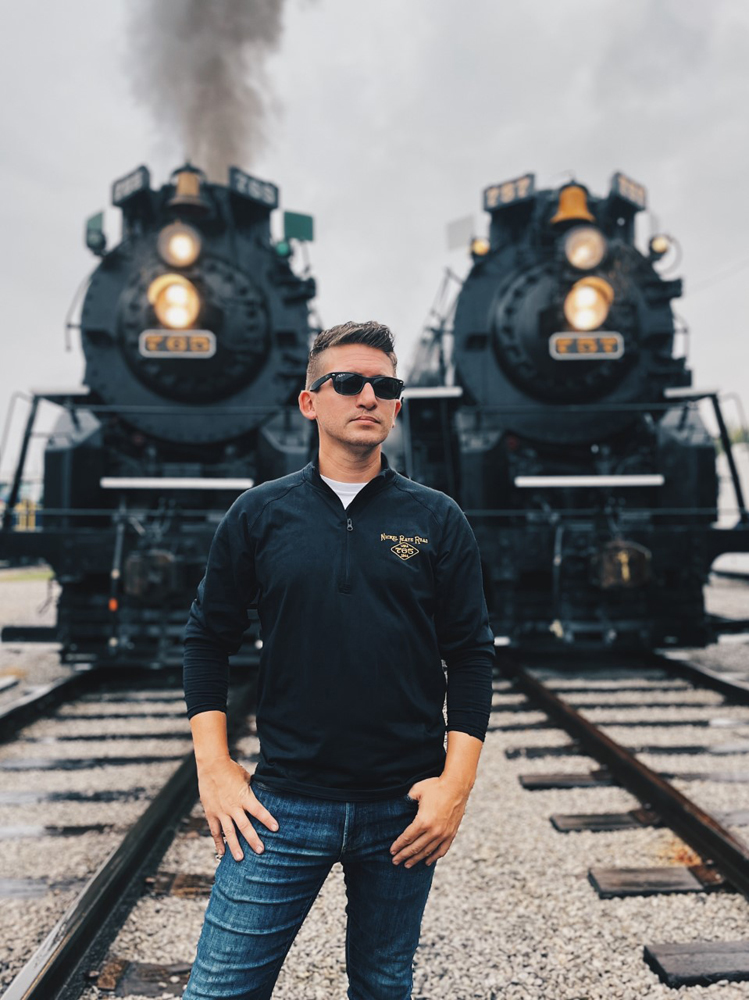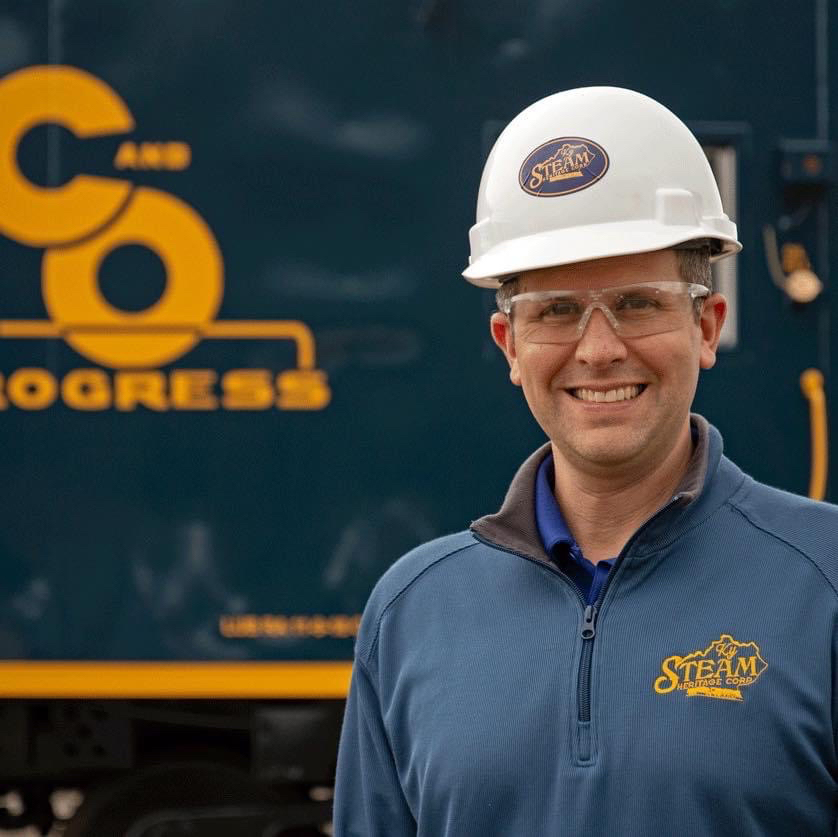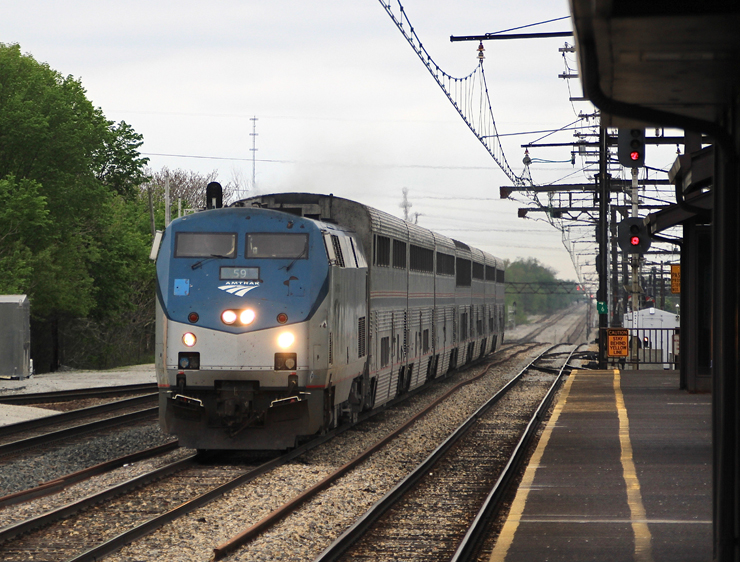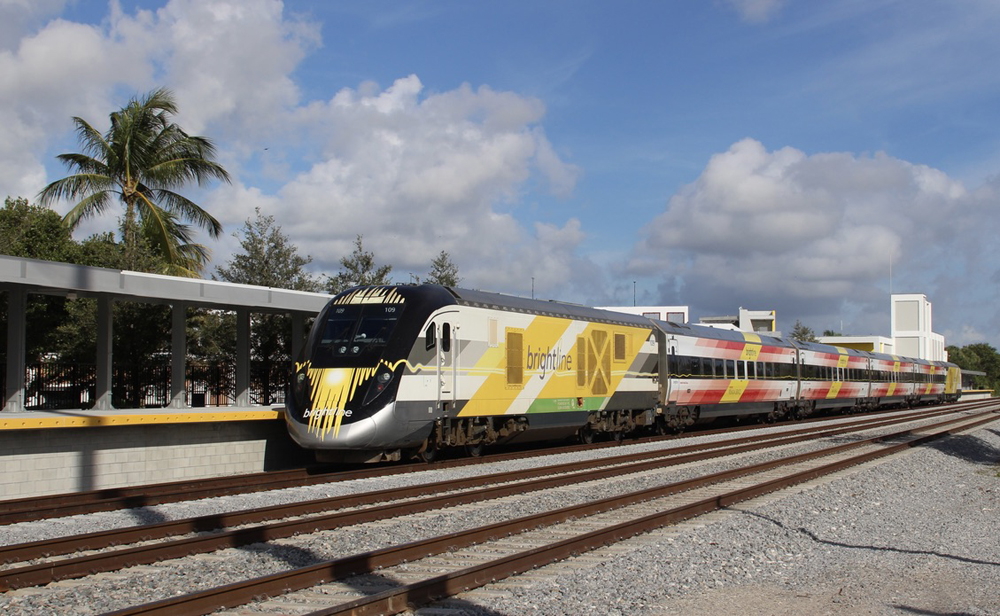
World events the past two years have kept people from doing what they enjoy. Communities have endured a near-two-year-long pandemic and are navigating the highest inflation in 40 years. Conflict overseas is rattling economies and threatening financial stability. Such events underscore the need for rail preservation groups, who rely on those to share in their vision, to be cognizant of external factors and remain agile while addressing their problems and priorities.
These groups cannot focus exclusively on a locomotive restoration, or a one-time fundraising event, but must have a strategic roadmap that guides them through unexpected times like pandemics or recessions. Trains News Wire interviewed Kelly Lynch, vice president of the Fort Wayne Railroad Historical Society, celebrating its 50th anniversary this year, and Chris Campbell, president of the Kentucky Steam Heritage Corp., a relatively young non-profit. They discussed how each organization recognizes its problems and priorities and uses them as a roadmap for future success, while dealing with unexpected events. Some answers were paraphrased for clarity.

Q: As you lead your respective non-profits, how do you identify your priorities and problems and what are you doing to provide solutions? Walk us through your Top 2-3 priorities and/or problems and how they are unique from non-railroad groups.
Lynch: There’s an old quote about how “perfect shouldn’t be the enemy of great” but I believe “goodness can be a champion of great.” [Organizations] will always be strapped for time and resources, but there are several things always floating in the mix, like continuous improvement and strategic planning. Everyone, including myself, wants to be on or near the steam locomotive when they’re running, but the day-to-day skills involved in that don’t necessarily translate as easily to strategic or long-term planning.
Continuous improvement has nothing to do with the financials, but about everything under the hood. Customer service, on-board service, marketing, messaging, training, emergency planning, mechanical practices, etc. We aren’t competing with any other rail tourist outfit — we are competing with ourselves, from last year, the year before, ten years before, etc.
Campbell: Our top priorities are always in flux but are centered on the same theme month in and month out — how are we a viable preservation entity while benefitting the community at large?
That theme permeates our microcosmic priorities. The biggest thing we focus on is how to make Appalachian Kentucky a tourist attraction. We are fighting a bigger battle than many rail-based non-profits in that our mission transcends preservation. We, of course do love trains and that’s why we exist, but there’s a bigger play here, in that trains can springboard many other positive tourism and industrial development possibilities in our region.
When we set a priority list, it’s usually about operations, fundraising, and infrastructure improvements. Each time we convene, we talk about big picture plans that can affect our future, as well as short-term operation events, and then of course, the restoration of Chesapeake & Ohio No. 2716. All of these things have their own place, and all of them relate to one another in some way.
Q: When you are seeking funds for your organization or for a specific project, how do you make it engaging and interesting to the general consumer?
Lynch: You have to make it culturally relevant and non-condescending. You have to translate the wonder and awe and love we have for this stuff into language and a context that people without a background or interest in railroading can understand or appreciate. Win the heart, and the mind, and the wallet will follow.
Campbell: We have built a brand of engagement through the internet. Our existence from the start was basically as a media company. We didn’t have anything to show any besides the past and the future. Because we had to our organization from scratch in the internet age, we created content from the start that allowed people to engage with us. When we engage with the public, we try to first make it visually captivating. Video and photos are the name of the game. Press releases include pretty pictures and announcements contain videos.
Q: If you had to break it down by a percentage, how many of your donations are from enthusiasts versus the general public? And of that, how often are donations recurring, or one-time?
Lynch: It’s important to keep track of who your people are and where they come from and what they’re interested in. We know who our donors are and give them the first opportunity to participate. They are usually from our membership and donor roster. You have to prioritize these relationships. These are folks giving you money already, so keep them close, recognize them, let them be your champions. People outside those circles will be drawn to the success and progress once your base helps you get started.
Campbell: Most of what we receive is by one-time donation, though there are many recurring one-time donations … I would say we are about 60% enthusiast driven, and that number is skewing slightly away from enthusiasts as we further our mission to help a general population, rather than just serve enthusiasts.
Q: How far in advance are you looking? How do you balance the needs of right now with the needs of the future?
Lynch: [Fort Wayne Railroad Historical Society] will be 75 years old when I’m 62. That’s amazing and frightening. I hope everyone who invests in a place like Fort Wayne asks how to leave the place better than how they found it. The biggest thing for me, at 36, is how can we set our organization up for success for the next 50 years as we celebrate our 50th anniversary this year. What is going to be the way we carry ourselves into the future? It has occupied much of my life for 15 years and we’re finally starting to see the pieces come together.
Even if the plan changes and evolves year-to-year, you have to have some mid and long term goals. Just running a steam locomotive everyday can’t be your only priority, because if it is, you won’t have a steam locomotive to run for very long. You have to have a ground plan – what you’ll do every day – and a long-term plan – how you’ll guarantee you can keep doing what you do.
Campbell: We are looking 3-5 years into the future right now. The present is certainly front and center, but since we are still in our relative infancy, we are always putting stock in what is to be, rather than what is. We have a 10-year goal, and this is the first time we’ve been able to start planning for that far in advance – largely because of some fiscally responsible decisions through COVID.
Q: Did COVID-19 exacerbate your priorities and problems, and did they create new ones? On the flip side, did the pandemic create opportunity and if so, what opportunity and how?
Lynch: COVID really was a stark reminder that the future is not going to be easy, and success is not going to be unearned. What’s going to happen if we can’t run our trains and have people around? Doesn’t that defy the purpose of what we’re doing? A lot of people use trains to escape from the real world, so the real world impacted a great deal of what we were able to do up until recently – for some, that process was fraught, but it’s just another opportunity to pivot, be nimble, and be responsive.
Campbell: The pandemic wasn’t crushing to us in real-time as we are not a full-time operating entity. We were already reliant on donations to keep the lights on and to keep our mission moving forward. People, in general, did tighten up their finances during a time of great uncertainty, but we didn’t suffer because of a lack of ticket or admission revenue. The pandemic did make us prioritize fiscal expenditures and be smart about how our money was spent.
Q: Financially speaking, did the COVID-19 lockdown have a positive/negative variance on financial goals/benchmarks?
Lynch: It set us back, but we were also able to hold one event during the year and win a COVID relief grant to help cover some expense.
Campbell: COVID was hard in terms of us making progress with in-person volunteer work. We also had to shelve several events that would either be centered around fundraising or fundraisers themselves. We definitely didn’t have a positive outcome from COVID in any way, but we did deal with it with what appears in retrospect to be a rather level-headed approach. We spent the grant dollars that we had to spend during that period, limited our costs, and saved the big-ticket purchases until after things became less uncertain.














Both of these men are clearly thoughtful, insightful and cognizant of broad, future-driven issues and needs. They are terrific models of effective organizational leadership.